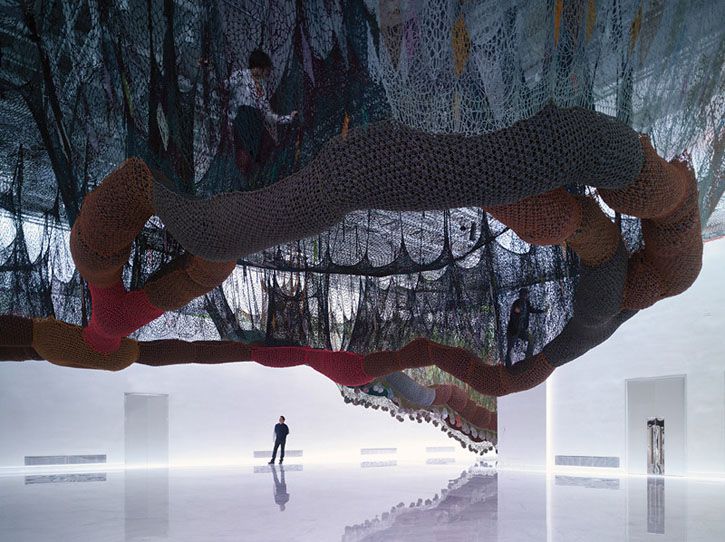Msc1G7:Student2
Pavilion
Tongava Park Overlook
Transparent envelope

Interactive origami wall
People regulate the amount of light in the space

ICD/ITKE Research Pavilion 2012/2013
Strings as architecture and structure

ICD/ITKE Research Pavilion 2013/2014
Strings as architecture and structure

ICD/ITKE Research Pavilion 2014/2015
Strings as architecture and structure

Water Wall
A wall of water that is not so much a physical obstical as it is an emotional obstacle for not wanting to get wet.

Bleigiessen
Strings and marbles as spatial intervention/art in architcture

Suspended walking route
Representation of the clouded mind ni contrast with the surroundings

Materials
Why fibres?
There is a large amount of materials that can make up fibres. Fibres can be carbon, glass, metals or cellulose for example. This gives us the possibility to pick the right material for different purposes. Carbon for structure, glass for optics silk for tangiblity.
Fibres provide an opportunity to use the same basic concept for floor, walls and ceiling. Or rather, it makes the different surfaces blend into eachother. Resulting in an architectually different space where walls might as well be floors and ceilings turn into walls.
The network of fibres could represent an abstact visualisation of the nerves and synapses in the brain. This in turn refers to either the calmness of a mindful brain or the chaos of a stressed brain as represented in the achitectural space envelloped by the fibres. A more of less dense network could respectively represent an ignorant or enlightend mind.
Material possibilities
As mentioned above there is a broad spectrum of materials availible for use of fibre. Carbon fibre is a strong fibre and therefore more suitable for construction, it's natual aesthetic appearance is quite iconic and doesn't leave as much room for adjustment as say optic fibre. Optic fibre has and inherent aesthetic appearance that is more transparant and it's color can be adjusted insstantly. Silk fibre has a more tangible texture. While the previous fibres are solid, silk fibres are less rigid and allow for a tangible interactivity. Metal fibres, although more rigid, can perhaps be attributed a tangible experience in means of electricity. A possible opportunity wouldd be optic fibre embedded in a carbon fibre surface for a more intergrated experience. What the desired means of interaction and construction are is still to be determined as the design of the pavilion progresses.
